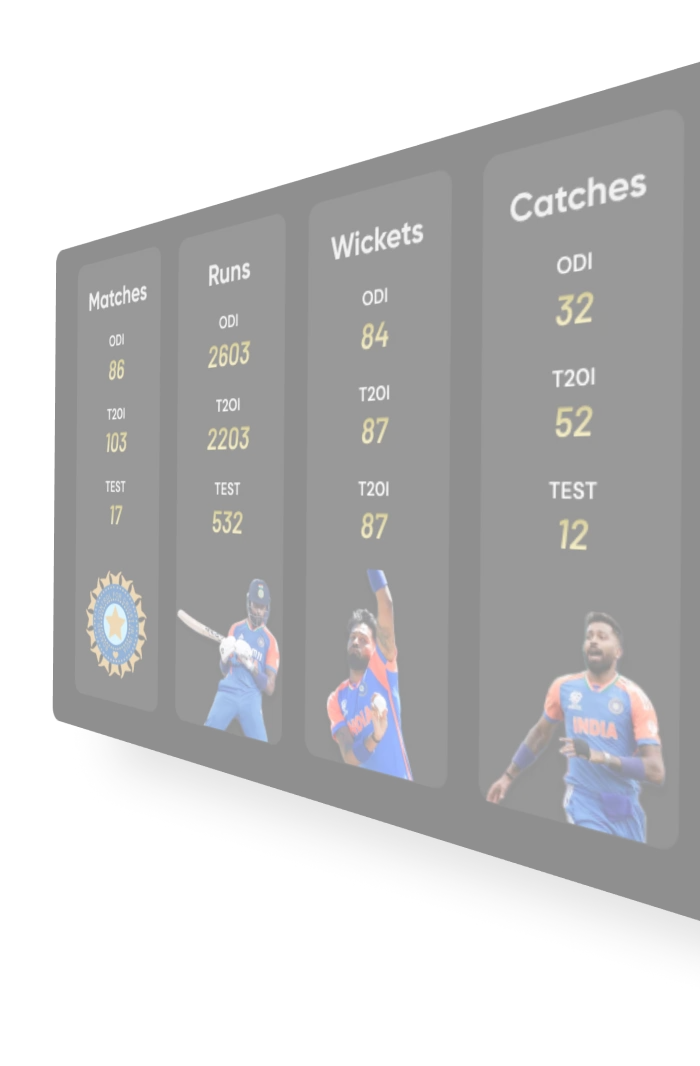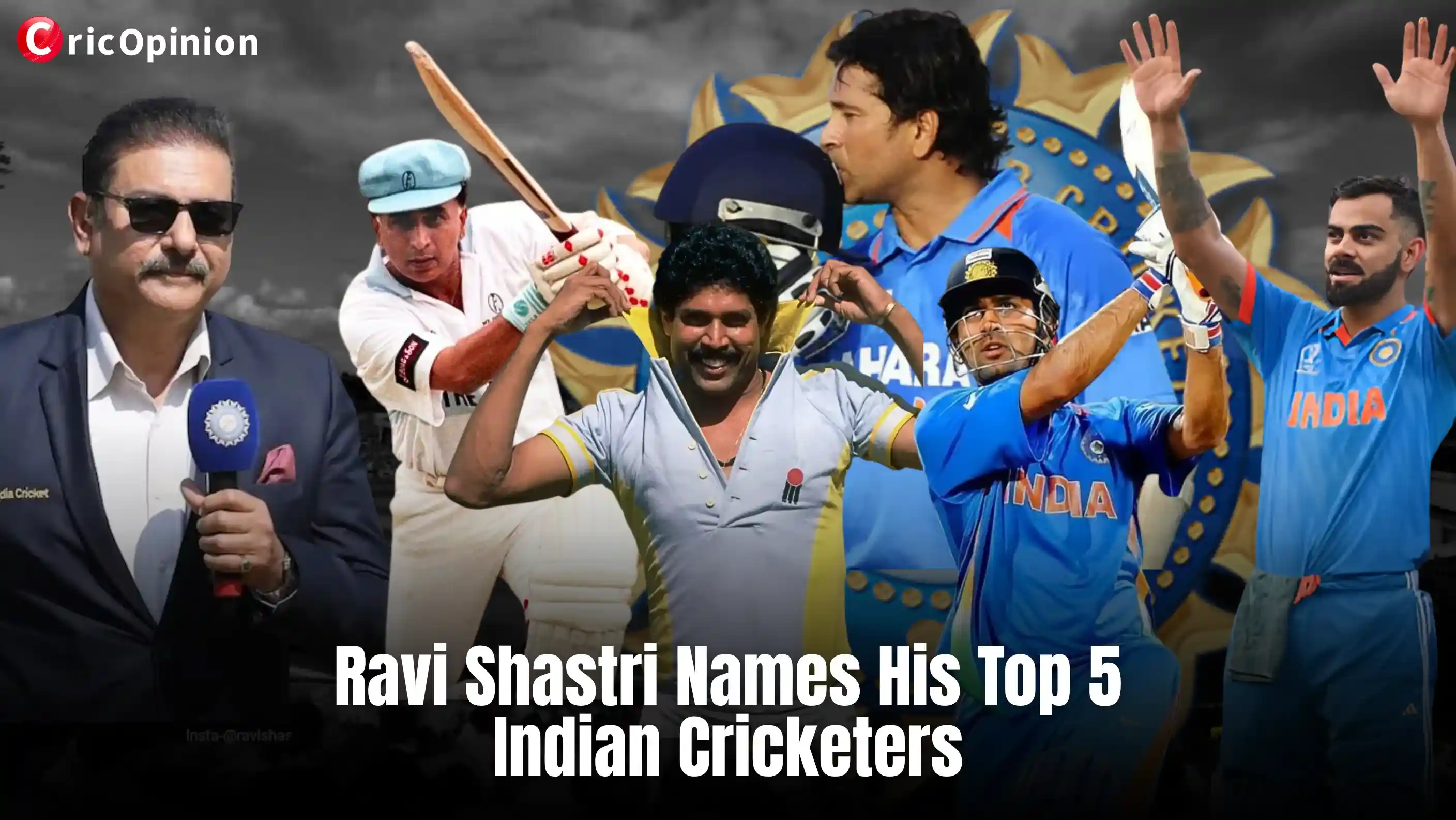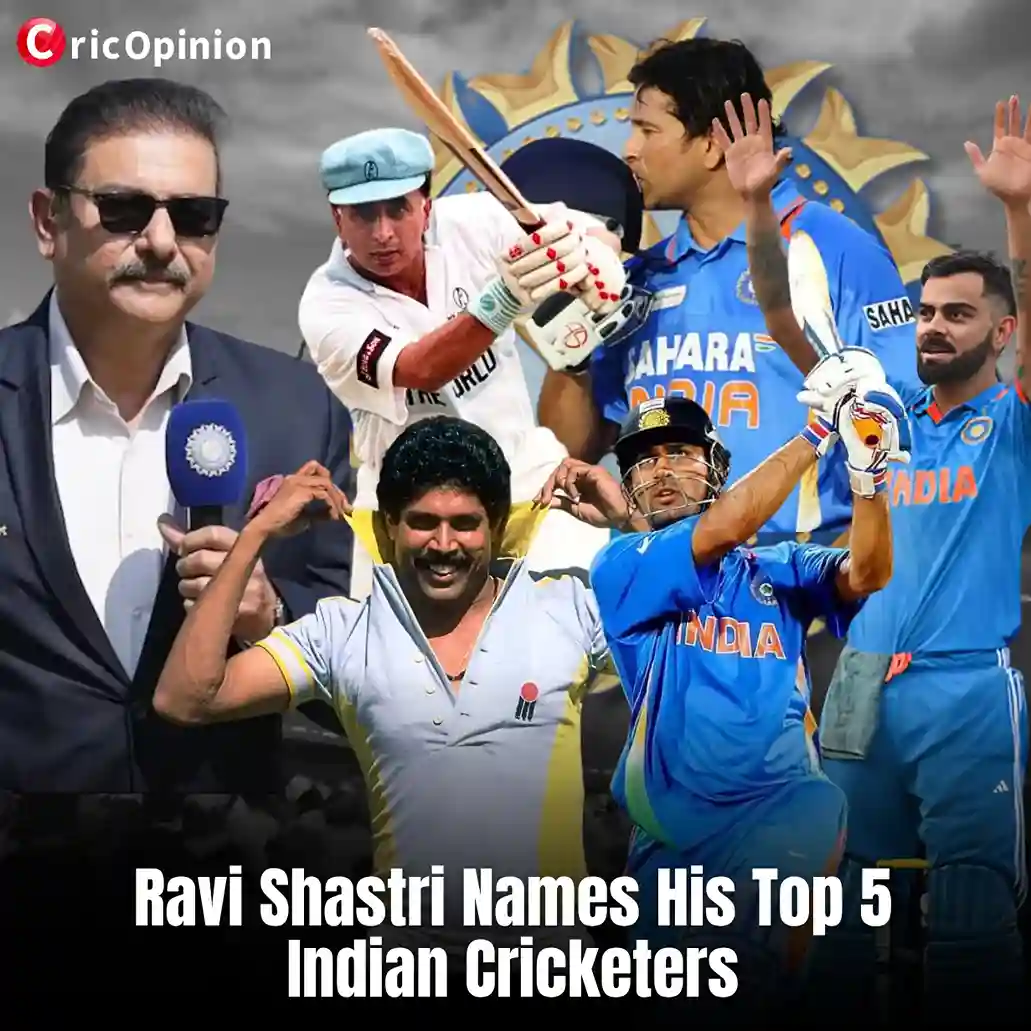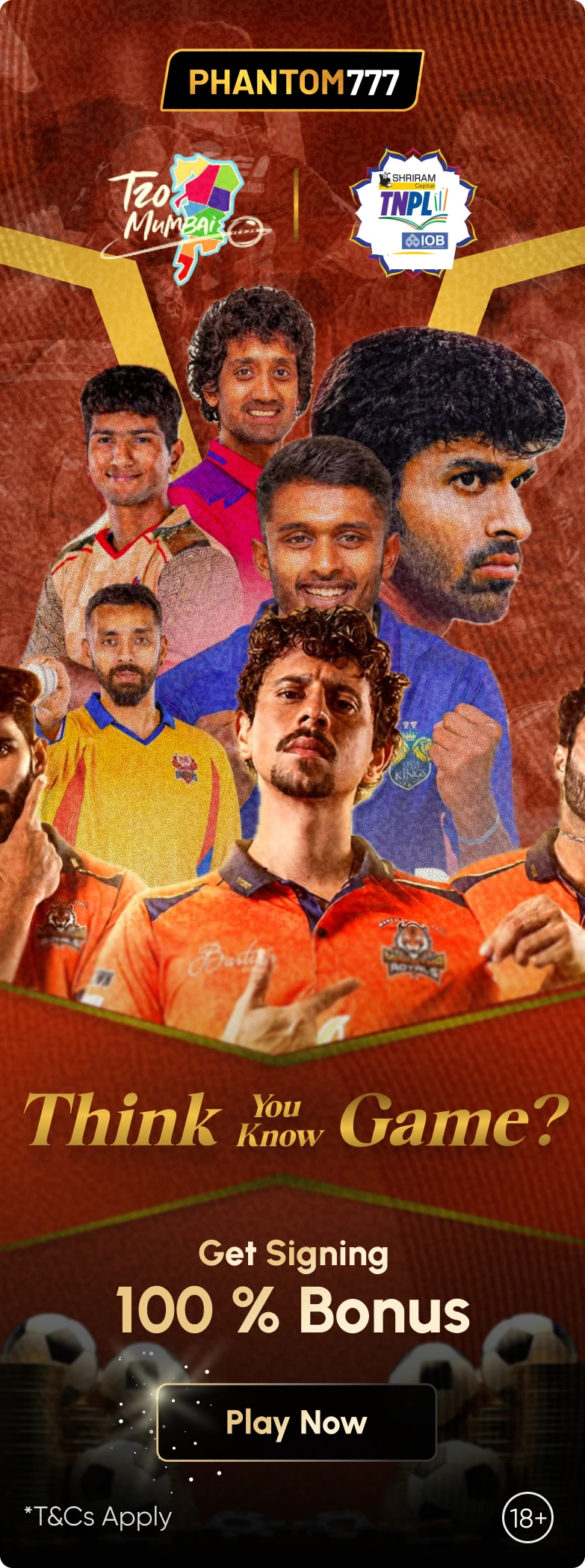Ravi Shastri Names His Top Five Greatest Indian Cricketers of All Time

Table Of Contents
Ravi Shastri’s Top Five Indian Cricketers Legends of all time
Ravi Shastri’s selection of Sunil Gavaskar, Kapil Dev, Sachin Tendulkar, MS Dhoni, and Virat Kohli as the five greatest Indian cricketers reflects a careful consideration of players who have defined Indian cricket across five decades.
Shastri, a member of the 1983 World Cup-winning team and a transformative coach during India’s Test dominance, adopted a decade-by-decade approach to justify his picks, emphasizing their influence on the game and their ability to shape Indian cricket’s global standing.
Sunil Gavaskar
Sunil Gavaskar, who is the greatest cricketer of his time in the 70s, was known for his batting prowess, technique, and determination. Known as the ‘Little Master,’ Gavaskar amassed 13,214 runs in 233 international matches at an average of 46.20, including 35 centuries. His ability to anchor innings against fearsome pace attacks, particularly in an era when India was establishing itself in world cricket, earned him Shastri’s nod as the top batsman.
Kapil Dev
Kapil Dev is the very first successful captain of Team India, represented in the 1980s, and is one of the most brilliant all-rounders of his time. As India’s first World Cup-winning captain in 1983, Kapil’s 5,248 Test runs and 434 wickets transformed India into a competitive force. Kapil Dev was the one who ignited the hope of Team India to perform on the World stage, definitely deserves the name in the list of greatest Indian cricketers.
Sachin Tendulkar
Sachin Tendulkar is definitely at the top of the list when looking at the mountain of records in every format before the God of Cricket retired. Tendulkar’s 24-year career, 100 international centuries, and ability to face every major pace attack from Wasim Akram to Glenn McGrath set him apart. Shastri highlighted Tendulkar’s role in carrying the expectations of a billion fans, making him the undisputed face of Indian cricket in the 1990s.
MS Dhoni
MS Dhoni, the most successful captain in Indian cricket history, who represented the 2000s, was recognized for his leadership, calm personality, and impressive performances. Dhoni’s captaincy led India to the 2007 T20 World Cup, the 2011 ODI World Cup, and the 2013 Champions Trophy, while his calm demeanor and finishing skills redefined wicketkeeping in India.
Virat Kohli
Virat Kohli is one of the most influential cricketers of all time, according to Shastri. Representing the 2010s, Kohli has been consistently breaking records after records in every format throughout his career. With 14,181 ODI runs at an average of 57.88, including 51 centuries, and 40 Test wins as captain, Kohli’s aggressive mindset and fitness culture revolutionized Indian cricket. Shastri, who coached Kohli during India’s historic Test series wins in Australia (2018-19 and 2020-21), praised his role as a Test cricket ambassador. Even when Kohli announced his retirement there were a lot of talks as to who will replace him. However, Shubman Gill with some great batting has shown enough mettle to take the baton forward from Kohli.
These five players, according to Shastri, represent the pinnacle of Indian cricket’s evolution. Each cricketer has etched their name in the annals of cricket through their skill, leadership, and global influence.
Notable Names Missed by Ravi Shastri
While Shastri’s list celebrates some of India’s greatest cricketers, the omission of several iconic names has raised eyebrows and fueled debates across cricketing circles. Most notably, Sourav Ganguly, Rahul Dravid, Anil Kumble, and Rohit Sharma were left out, despite their monumental contributions to Indian cricket. These exclusions have sparked discussions about the criteria Shastri used and whether his selections were influenced by personal bias or specific roles within the team.
Sourav Ganguly, often credited with transforming Indian cricket in the early 2000s, was a surprising omission. Former Indian captain, Saurav Ganguly, was one of the best leaders of his time, leading Team India to the 2003 World Cup final and a historic Test win in England in 2002. His 18,575 international runs and ability to nurture young talents like Yuvraj Singh and Harbhajan Singh made him a transformative figure.
Rahul Dravid, known as ‘The Wall,’ was another glaring absence. Dravid’s 24,208 international runs, including 48 centuries, and his role in stabilizing India’s batting during tough overseas tours, particularly in England and Australia, earned him universal respect. His leadership in India’s Test resurgence in the mid-2000s further bolstered his case.
Anil Kumble, India’s greatest match-winner with 619 Test wickets, was also overlooked. Kumble’s ability to single-handedly turn games, including his iconic 10-wicket haul against Pakistan in 1999, and his leadership during India’s 2008 Perth Test win, made him a strong contender. His exclusion is particularly striking given Shastri’s emphasis on impact, as Kumble’s contributions as a bowler were unparalleled.
Former Indian captain Rohit Sharma, a modern-day great, was another notable miss. During his captaincy, India won the 2024 T20 World Cup and two ICC Champions Trophy in 2013 and 2025. He also played a crucial role in the 2007 T20 World Cup. He has a remarkable record of 264 runs in an ODI.
Shastri acknowledged that players like Jasprit Bumrah could make the list in the future, but emphasized that his selections focused on those who had nearly completed their careers, which may explain Rohit’s exclusion but does little to quell the debate.
Other names like VVS Laxman, whose clutch performances in Tests, and Bishan Singh Bedi, a legendary spinner, were also mentioned as close contenders but didn’t make the cut. Shastri’s choices, while rooted in his personal experiences and a focus on players who shaped Indian cricket’s global narrative, have been criticized for overlooking these stalwarts whose contributions were equally significant in their respective eras.




FAQS
Top Teams
- India
- New Zealand
- Australia
- England
- South Africa
- Bangladesh
- Pakistan
Top Leagues
- Indian Premier League
- Women's Premier League
- Big Bash League
- T20 Mumbai Premier League
- The Hundred
- Caribbean Premier League
- Lanka Premier League
- Maharashtra Premier League
- Tamil Nadu Premier League
More Links
- Twitter trendings
- Off Field Talks
- Pitch Analysis
- Team Analysis
- Player Analysis
- Match Prediction
- Toss Prediction













